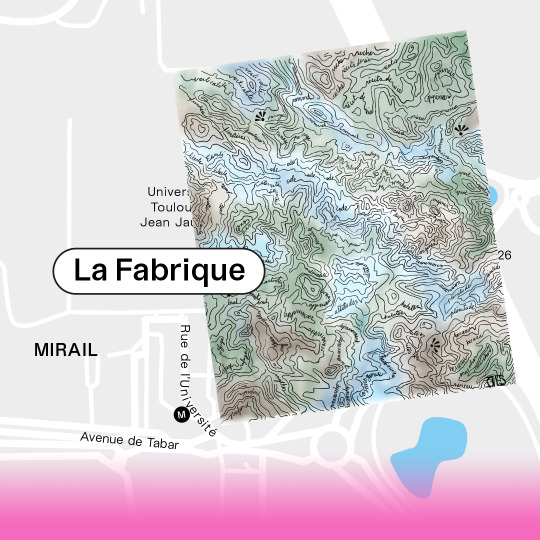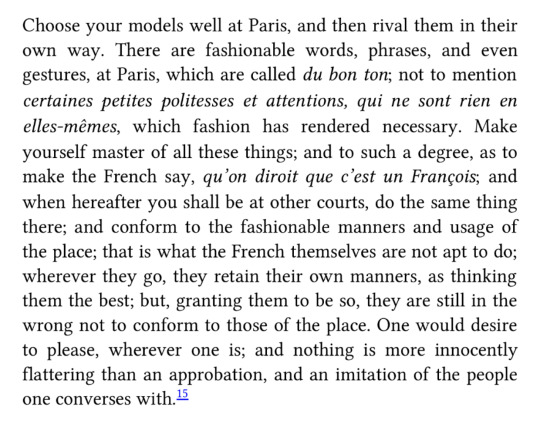#chambaud
Text

Etienne Chambaud, Mirror, 2024
23 notes
·
View notes
Photo

Etienne Chambaud
3 notes
·
View notes
Text
SYSTÈME DE SANTÉ : DES CRISES SYSTÉMIQUES
VOIR LE DOSSIER SANTÉ DE METAHODOS :
LA PROMESSE (125) RELATIVE AUX DÉSERTS MÉDICAUX : ÉCHEC DANS LA MISE EN ŒUVRE DES OBLIGATIONS DE L’ÉTAT – DOSSIER SANTÉ
http://metahodos.fr/2024/05/29/deserts-medicaux/
ARTICLE – Crise des systèmes de santé en Europe : comment expliquer les difficultés françaises ?
Publié: 12 mars 2023, Laurent Chambaud, École des hautes études en santé publique…

View On WordPress
0 notes
Text

Ode aux montagnes
avec Valerio Adami · Babi Badalov · Juan Carlos Batista · Amélie Bertrand · Angela Bulloch · Christian de Cambiaire · Etienne Chambaud · Acaymo S. Cuesta · Pauline Curnier Jardin · Daniel Dezeuze
Ferran Garcia Sevilla · Ludger Gerdes · Jaroslaw Godfrey · Elias Hanselmann Eric Hurtado · Paul Iratzoquy · John Isaacs · Philippe Lamy · Ninon Lemonnier Anthea Lubat · Fleur Noguera · Julien Pastor · Lorène Roustin
Les Abattoirs, Musée - Frac Occitanie Toulouse et le Centre d’Initiatives Artistiques du Mirail (CIAM) sont heureux de présenter l’exposition Ode aux Montagnes à la Fabrique. À la fois apaisante et dangereuse, terrestre et céleste, la montagne n’a cessé de fasciner l’être humain, et en particulier les artistes. Ode aux Montagnes propose un regard sur ces territoires par le prisme de la création artistique contemporaine.
Pensée comme un sentier de randonnée, l’exposition offre un parcours ascensionnel, des origines de la montagne, jusqu’à son sommet. Constituée d’œuvres de la collection des Abattoirs, Musée - Frac Occitanie Toulouse, ainsi que de cinq artistes des régions Occitanie et Nouvelle-Aquitaine, Ode aux Montagnes est élaborée par les treize étudiantes du Master Métiers de l’art, Régie, Documentation et Médiation qui proposent une déambulation plastique et poétique des grottes jusqu’aux portes du ciel.
exposition en partenariat avec les Abattoirs, Musée - Frac Occitanie Toulouse
exposition du 7 au 30 mars 2024
ouvert du lundi au vendredi de 9h à 17h
entrée libre
La Fabrique - 5 Allée Antonio Machado 31058 Toulouse
🔗 culture.univ-tlse2.fr
0 notes
Photo

Souvenir du passage d'Emily Loizeau lors de sa tournée "Mona" (février 2018) à l'Espace James Chambaud tout près de Pau (Pyrénées Atlantique).
Série complète sur mon site web : https://www.ed-photography.com/post/emily-loizeau-concert-pau-2018 #concert #live #emily #loizeau #pau #james #chambaud #mona #piano #chanson #francaise #chansonfrancaise #edphotography #photo #photographe #tarbes #pyrénées #atlantique #lons
#concert#live#emily#loizeau#csabapalotai#csabapalotaï#pau#james#chambaud#mona#piano#chanson#francaise#chansonfrancaise#edphotography
5 notes
·
View notes
Photo



Etienne Chambaud, Cella, 2017-2018 | Esther Schipper
78 notes
·
View notes
Photo

Exhibition view: Etienne Chambaud, Inexistence, Esther Schipper, Berlin (3 July–28 August 2021). Courtesy the artist and Esther Schipper, Berlin. Photo: Andrea Rossetti.
18 notes
·
View notes
Photo

Étienne Chambaud INCOMPLT, 2016
Video (color, sound)
Duration: 31:12 min
In a mountain forest of central Mexico—a former sacred forest turned into a natural park—millions of monarch butterflies gather each winter after having migrated over thousands of kilometres. At the edge of this forest, ice symbols are piled up in a giant heap, multitude of translucent bars and circles, ones and zeros, which gradually melt, break or amalgamate. INCOMPLT documents the coexistence of this unique natural phenomenon and this indecipherable code. The film soundtrack combines recorded sounds with their transcription into an instrumental orchestration composed by Kit Vaughan Soden (composer and researcher in Montreal, QC, Canada) with the help of a sound spectrum analysis software.
INCOMPLT is a film about the apparatus of cinema and the apparatus of the natural park; it deals with the coexistance of those informational stratas and spaces within the space of the screen. It describes a multistable world that layers natural phenomena, decors, modes and conditions of conservation, representation and exhibition; and invokes an equally multistable perception.
https://labor.org.mx/en/expositions/incomplt
5 notes
·
View notes
Photo

(665g)
luzfosca: Étienne Chambaud La Danse, 2009; anneyhall: JR: Bird Ballerina, France, 2014.; Reblogged from tobaccotrashwtf-blog
(via triptychon64)
Visit me on triptych193.wordpress
2 notes
·
View notes
Photo




Etienne Chambaud- Cella, 2017-2018
3 notes
·
View notes
Photo

Étienne Chambaud, Lapidation Piece, 2012
3 notes
·
View notes
Photo

Auguste Flandrin (1804-1842, French) ~ Mathilde Mirabel-Chambaud (detail), 1835
[Source: Lyon, musée des Beaux-Arts /© Lyon MBA]
41 notes
·
View notes
Note
How important was French in the English gentry and aristocracy classes?
Well, hello! (read please in the voice of Eva Green), the fast answer to this is: pretty much for appearances and practical reasons, but many did not managed to master the language.
(This was supposed to be a short response to this ask and well, it ended as a long LONG post. You all have been warned (ohohohohohoho).
Now, this is the LONG answer:
The French language have been an important part in the courts of England since the Norman Conquest in 1066 (Flashback to the Middle Ages!), when French was used at court and by the aristocracy, clergy, and law courts. I mean, the Normans were French, therefore they spoke French, BUT it was not the language of the common people, they spoke English (kind of, or more properly, the Middle Ages version of English, Old English and then Middle English). In the 13th century the French territories of the Norman king were lost, and the high class became more focused in their English lands. With the black plague in 1349-50, 1/3 of the English population died and the English language rose with the dead of Latin and French speaking clergy and the rise of the middle class. English finally became the official language in courts and Parliament in 1362.
Making a wild jump forward to the 18th century, French was taught to the aristocracy, and it was important in intellectual circles, and was a language largely taught in other European courts even before the 17th century (let’s remember that in the 18th century, France became the major European power replacing Spain), since the French cultural influence in the continent was (and still is, worldwide) very strong, being considered the cultural, learning, and fashion centre of Europe, and of course the French nobility was married with a lot of European nobility.
What does this even mean? Well, if you wanted to learn anything in the illustration period, you had to know French and Latin. If you wanted to learn dance, all the books were in French (until they started to be translated into English); if you wanted to know the latest fashions, you had to know French to read the magazines… and there’s a long etcetera. Even the treaties of Ultrecht, Rastatt, and Baden (which ended the War of Spanish Succession) were written in French, it was the language of global diplomacy and commerce. Think of it as we nowadays think of English: if you’re from Mexico, Congo, Poland, Japan, or wherever, you’re expected to know English and you know that a lot of academic and business doors are going to be closed if you do not speak the language.
Now, let’s move to Britain where French was considered to be a light, clear Language, and in contrast, English was energetic and warm, therefore both were suited for the Enlightenment agenda. But, also thinking about the conflicts between both countries, many Britons (especially some Tories) dismissed the French language at all, to the point that fluency in any foreign language was reason for mistrust (yeii monolingual patriotism #not), and being bilingual could be a dangerous ability in the age of intrigue, espionage and war.
Philip Stanhope, fourth Earl of Chesterfield, used French words constantly in his letters, not only was he bilingual but he also managed to be very critical of the French manners and attitudes, like seen here in a 1751 letter to his illegitimate son:

But as the 18th century advanced, the middle class was rising along with their desire to be perceived as refined, they also looked for the learning of French, not to be fluent in the French court, but to raise their social status within Britain itself. This way, French was often taught in schools and at home, along other prized artistic skills like drawing, singing and dancing, being especially important for girls’ education, because boys were supposed to be taught “manly” languages, like Latin and Greek (modern European languages like Italian and French were for women).
French was a way to show polished social graces for the élite and middle classes, but it was not the only reason for desiring to learn: for the ones directly involved with the Industrial Revolution, the French language was a pragmatic choice to have a bigger market in Europe and North America, making business-related French to be learnt by tradesmen, manufacturers, and entrepreneurs, often using self-learning textbooks (like an 18th century Duolingo), like “Grammar of the French Tongue”, by Louis Chambaud (1750), but this could result in a perfect mastering of the reading and writing, and have absolutely no idea about the pronunciation, like the Scottish encyclopaedist William Smellie. This became so important for the industrial cities, that sometimes they favoured the teaching of French over Latin and Greek in schools.
Even with the options of learning, it was widely recognised that to be flawlessly proficient in French, you should live in France for a while, or the services of a native speaker were required. The Grand Tour would be a solution for the first one, making a particular kind of literature to flourish with popular and influential works like Tobias Smollett’s “Travels Through France and Italy” (1766), or John Moore’s “A View of Society and Manners in France, Switzerland and Germany” (1779). The ultimate purpose of the Grand Tour was for the aspiring gentlemen to acquire cultural refinement, that of course included perfecting their French. Now, being overseas was not always perfectly accepted, because, according to some Britons, some people returned to England as Catholics if they stayed in France for long enough, creating an aversion to their own country (me, laughing in Catholic).
So, to avoid the “dangers” of living abroad, a native speaking teachers were required. These men and women, French teachers at schools and governesses living in British homes, were often émigrés (especially after 1789, because you know, people liked their heads where they were supposed to be), with credentials hard to check, and of course Catholics (terrifying!). And if we add the fact that some of the most famous French people in the 18th century were atheists (Diderot, Rousseau, Voltaire), that was even worse.
Anyway, even though the French language was surrounded of misconceptions, and class and education related status, even the most prominent writers, intellectuals, and politicians, could feel insecure and embarrassed by their lack of proficiency in the language. Like Horace Walpole, who despite being educated at Eton and King’s College Cambridge, confessed to Lady Hervey in 1765 that, when chatting in Parisian salons, he was “hampered in bad French”; or Edmund Burke, who in 1791 confided that he was ashamed “of the bad French which I speak”.
----------------------------------------------------------------------------
In Resume:
So, as a resume of all this answer that ended up being a LONG post, here some key facts about the French Language in England during the 18th century:
It was the international language of the 18th century, spoke in European courts, in business meetings, and used for the writing of treaties.
It was considered appropriate for polite conversation.
A sign of refinement, education and sophistication.
Associated to gracefulness and good breeding.
People were supposed to imitate and know the French manners, and use them in few occasions, like while in France, but adapt to the locals in other places.
Since languages were gendered (like taken from r/pointlesslygendered), French was considered effeminate and foppish, being very refined, but lacking strength (of course the Brits did not know what to say after The Terror and Napoleon happened). Girls were supposed to learn modern European languages like French and Italian, and boys would learn “manly languages” like Latin and Greek.
It was a basic in the aristocratic education, and was expected to be learnt and mastered.
Aristocracy would learn French with native speakers at school, at home, or while traveling and living in Europe.
The middle class would learn though books, school, and if was possible, living abroad.
The use of the language chances with class: aristocrats would use French while traveling, in polite conversation at home, and at courts in Europe, especially France; the middle class would use it for business and learning of new technologies and science.
Sources to learn more:
TheHistoryOfEnglish.com
“The French Language and British Literature”, by Marcus Tomalin, Routledge, 2006.
“The long adieu: how Britain gave up learning French“, by Ed West, The Guardian 2016.
#Anonymous#french#french language#britain#court#aristocracy#english aristocracy#18th century#middle ages#norman invasion#ask#long post
91 notes
·
View notes
Text
Papillon - HélèneChambaud - 2020
Papillon – HélèneChambaud – 2020
Quatrième de Couverture
Rencontrer Jules Verne ou bien encore Louis XIV, voguer sur les flots en furie, découvrir son âme sœur dans le tumulte d’une gare, déterrer un monde précolombien, aller à la rencontre de la littérature ou frissonner pour cet amour à sens unique pendant la Seconde Guerre mondiale. Voilà quelques-unes des expériences promises dans Papillon par Hélène Chambaud tout au long…

View On WordPress
1 note
·
View note
Text
Meander River, Alta., is under a mandatory evacuation order, as of 5:45 p.m. MT, Wednesday. Many had already left the community voluntarily as wildfires in northern Alberta continue to burn out of control.
Meander River is a small community approximately 45 minutes north of High Level, Alta. Sidney Chambaud remained in the community during the voluntary evacuation to act as security for homes left empty during the evacuation.
21 notes
·
View notes
Photo

Souvenir du passage d'Emily Loizeau lors de sa tournée "Mona" (février 2018) à l'Espace James Chambaud tout près de Pau (Pyrénées Atlantique).
Série complète sur mon site web : https://www.ed-photography.com/post/emily-loizeau-concert-pau-2018 #concert #live #emily #loizeau #pau #james #chambaud #mona #piano #chanson #francaise #chansonfrancaise #edphotography #photo #photographe #tarbes #pyrénées #atlantique #lons
#concert#live#emily#loizeau#csabapalotai#csabapalotaï#pau#james#chambaud#mona#chanson#francaise#chansonfrancaise#noiretblanc#blackandwhite#blackandwhitephotography#edphotography
0 notes